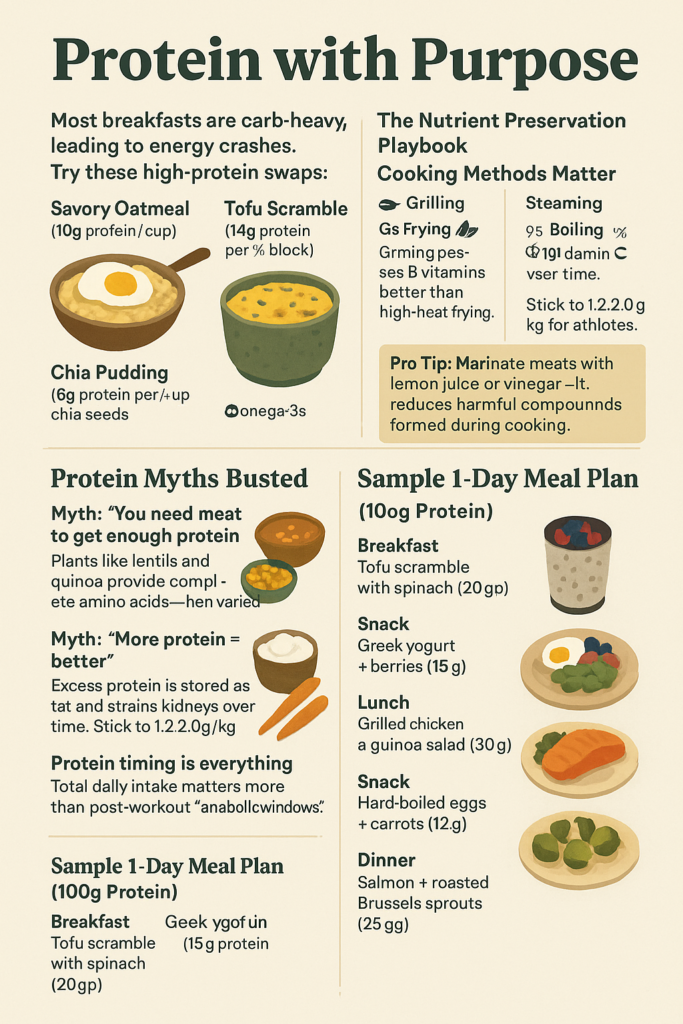
Table of Contents
Introduction: The Protein Paradox
Protein is the building block of life, essential for everything from muscle repair to hormone production.
Yet, in the quest to meet protein goals, many people fall into traps: sugary protein bars, processed shakes, or unbalanced meals that neglect fiber, vitamins, and healthy fats.
The result? A diet that’s high in protein but lacking in nutritional synergy.
According to a 2023 study in Nutrition Journal, 40% of gym-goers who prioritize protein intake show deficiencies in magnesium, fiber, or omega-3s. Registered dietitian Dr. Amanda Lee explains, “Protein isn’t a solo act—it needs to harmonize with other nutrients to keep your body functioning optimally.”
In this article, we’ll unpack five expert-approved strategies for boosting protein while preserving—and even enhancing—your intake of vitamins, minerals, and antioxidants.
Whether you’re vegan, a busy parent, or an athlete, these tips will help you thrive.
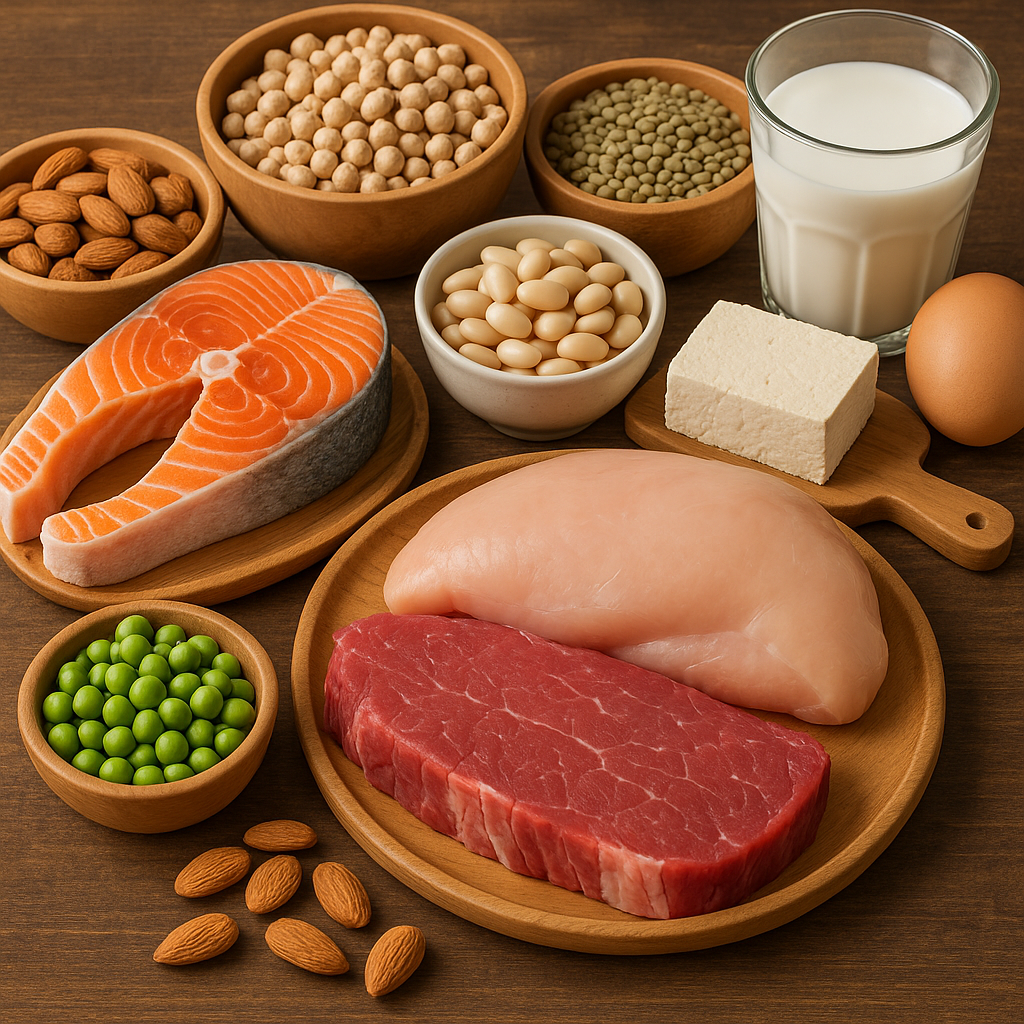
1. Plant-Based Proteins: The Nutrient Powerhouses
Why Plants?
Plant-based proteins like lentils, quinoa, and tempeh deliver protein plus fiber, iron, and phytonutrients. For example:
- Lentils: 18g protein + 15g fiber per cup (cooked).
- Chickpeas: 14g protein + 12g fiber per cup (cooked).
- Hemp Seeds: 10g protein + omega-3s per 3 tablespoons.
Science Spotlight:
A 2022 meta-analysis in Nutrients found that diets rich in plant proteins reduce inflammation and improve gut health compared to animal-heavy diets.
How to Implement:
- Meal Idea 1: Lentil & Walnut Bolognese (swap ground beef for lentils + walnuts for a fiber-rich pasta sauce).
- Meal Idea 2: Quinoa-Stuffed Bell Peppers.
- Snack Hack: Roasted chickpeas with smoked paprika.
Pro Tip: Combine legumes (beans) with grains (rice) to form complete proteins. Add lemon juice to boost iron absorption.
Common Mistake: Over-relying on tofu without varying sources. Rotate between tempeh, edamame, and seitan for diverse nutrients.
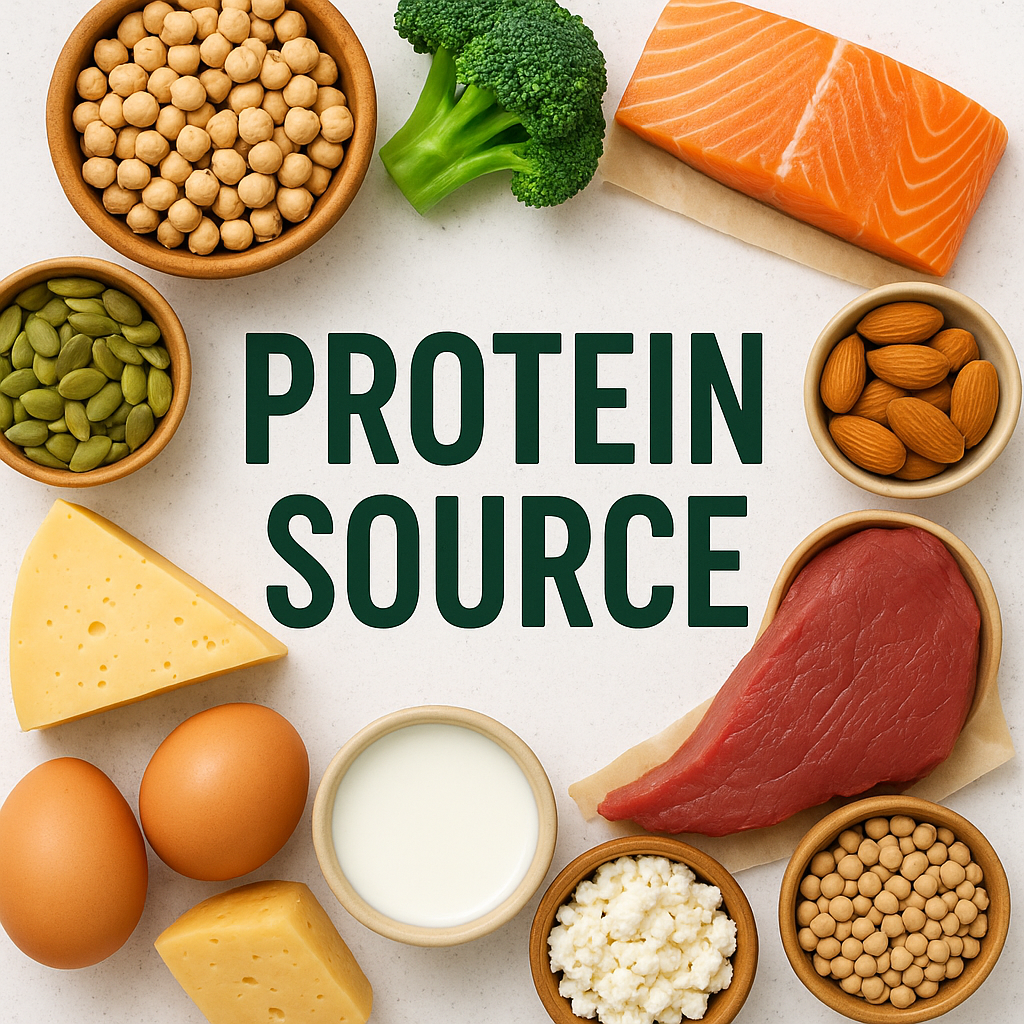
2. Smart Animal Proteins: Quality Over Quantity
The Best Picks
Not all animal proteins are created equal. Prioritize options that offer “bonus” nutrients:
- Salmon: 22g protein per 3oz + 2,000mg omega-3s (supports brain health).
- Grass-Fed Beef: 26g protein per 3oz + conjugated linoleic acid (CLA) for metabolism.
- Greek Yogurt: 17g protein per 6oz + probiotics for gut health.
Science Spotlight:
A 2023 study in The American Journal of Clinical Nutrition found that fatty fish like salmon improve protein synthesis 30% more effectively than chicken due to omega-3s.
How to Implement:
- Meal Idea 1: Salmon Buddha Bowl (grilled salmon, quinoa, roasted veggies, tahini drizzle = 35g).
- Meal Idea 2: Greek Yogurt Parfait (Greek yogurt, berries, chia seeds, almonds = 20g ).
Avoid processed meats (sausages, deli meats), which are linked to sodium overload and increased cancer risk (per WHO guidelines).
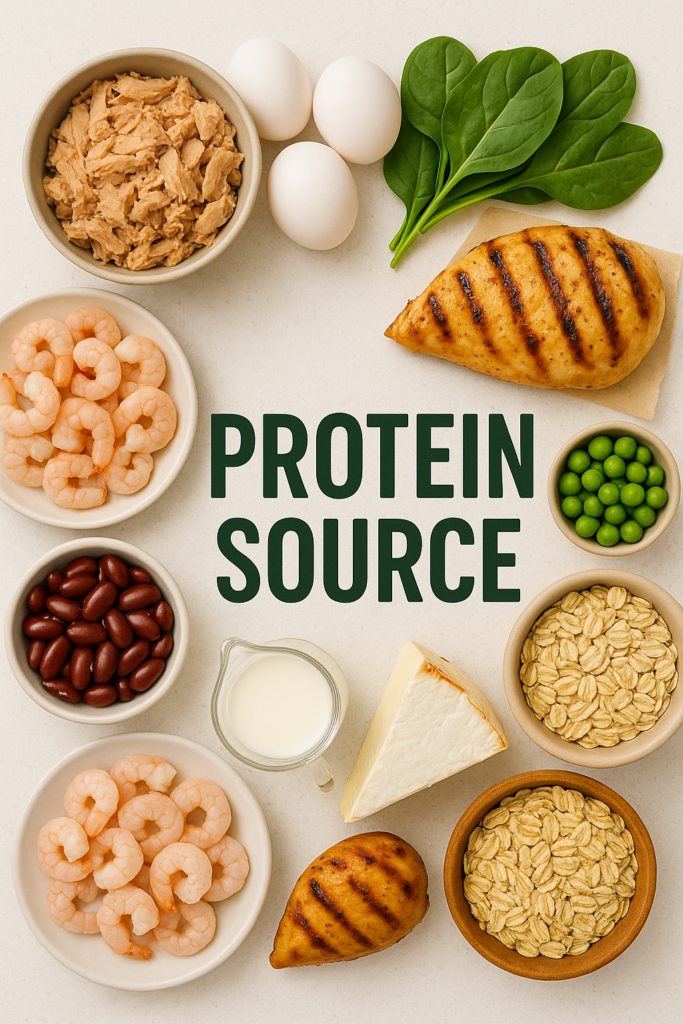
Pro Tip: Opt for pasture-raised eggs. They contain 2x the omega-3s of conventional eggs.
3. Protein-Packed Grains & Vegetables
Unexpected Protein Heroes
Many grains and veggies are stealth sources:
- Teff: 10g protein per cup (an ancient grain rich in calcium).
- Spinach: 5g protein per cooked cup + vitamin K for bone health.
- Broccoli: 4g protein per cup + sulforaphane (cancer-fighting compound).
Science Spotlight:
Research in Food & Function shows that spinach protein contains bioactive peptides that lower blood pressure.
How to Implement:
- Meal Idea 1: Teff Porridge with Almond Butter (cook teff in almond milk, top with nuts = 15g ).
- Meal Idea 2: Broccoli & Chickpea Stir-Fry (toss with tamari and sesame seeds = 18g ).
Pro Tip: Use spirulina (1 tbsp = 4g) in smoothies for a blue-green algae nutrient boost.
Common Mistake: Boiling veggies, which leaches nutrients. Steam or roast instead.
4. Snack Strategically: Nutrient-Dense Bites
Snacks That Pull Double Duty
Ditch the protein bars (often high in sugar) for these whole-food options:
- Cottage Cheese + Pineapple: 14g protein + bromelain (digestive enzyme).
- Hard-Boiled Eggs: 6g protein + choline (brain health).
- Pumpkin Seeds: 9g protein per ounce + magnesium for muscle recovery.
Science Spotlight:
A 2023 Journal of Nutrition study found that cottage cheese before bed boosts overnight muscle repair better than casein powder.
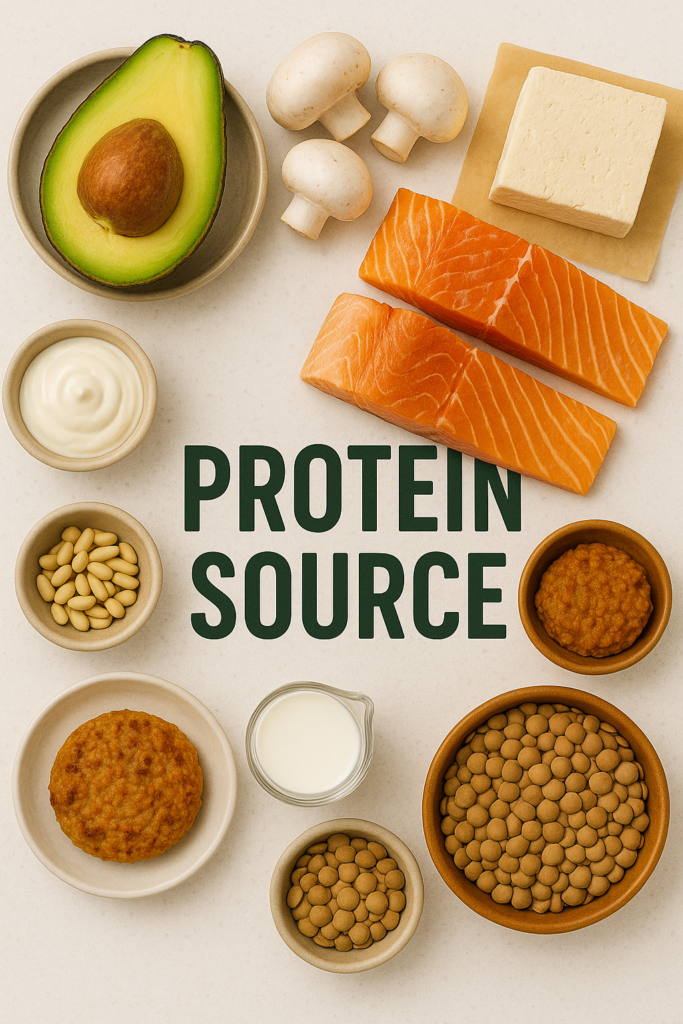
How to Implement:
- Snack Idea 1: Savory Cottage Cheese Bowl (cottage cheese, cherry tomatoes, olive oil, everything bagel seasoning).
- Snack Idea 2: DIY Trail Mix (pumpkin seeds, dark chocolate chips, dried apricots).
Pro Tip: Pair protein snacks with vitamin C (e.g., orange slices) to enhance iron absorption from plant sources.
5. Reinvent Breakfast: Beyond Cereal & Toast
Morning Protein Power
Most breakfasts are carb-heavy, leading to energy crashes. Try these swaps:
- Savory Oatmeal: Cook oats in bone broth (10g) + top with a fried egg.
- Tofu Scramble: 14g protein per ½ block + turmeric for anti-inflammatory benefits.
- Chia Pudding: 6g protein per ¼ cup chia seeds + omega-3s.
Science Spotlight:
A 2023 study in Appetite found that high-protein breakfasts reduce cravings by 40% compared to carb-heavy meals.
How to Implement:
- Meal Idea 1: Protein Pancakes (blend oats, cottage cheese, eggs, and banana = 25g ).
- Meal Idea 2: Smoked Salmon Avocado Toast (whole-grain toast, avocado, smoked salmon = 20g).
Pro Tip: Add collagen peptides to coffee or smoothies for a flavorless boost.

The Nutrient Preservation Playbook
Cooking Methods Matter
How you cook impacts nutrient retention:
- Grilling vs. Frying: Grilling preserves B vitamins better than high-heat frying.
- Steaming vs. Boiling: Steaming broccoli retains 90% of vitamin C vs. 50% when boiled.
Pro Tip: Marinate meats with lemon juice or vinegar—it reduces harmful compounds formed during cooking.
Protein Myths Busted
- Myth: “You need meat to get enough protein.”
Truth: Plants like lentils and quinoa provide complete amino acids when varied. - Myth: “More protein = better.”
Truth: Excess protein is stored as fat and strains the kidneys over time. Stick to 1.2–2.0g/kg for athletes. - Myth: “Protein timing is everything.”
Truth: Total daily intake matters more than post-workout “anabolic windows.”
Sample 1-Day Meal Plan (100g Protein)
- Breakfast: Tofu scramble with spinach (20g ).
- Snack: Greek yogurt + berries (15g ).
- Lunch: Grilled chicken & quinoa salad (30g ).
- Snack: Hard-boiled eggs + carrots (12g ).
- Dinner: Salmon + roasted Brussels sprouts (25g).
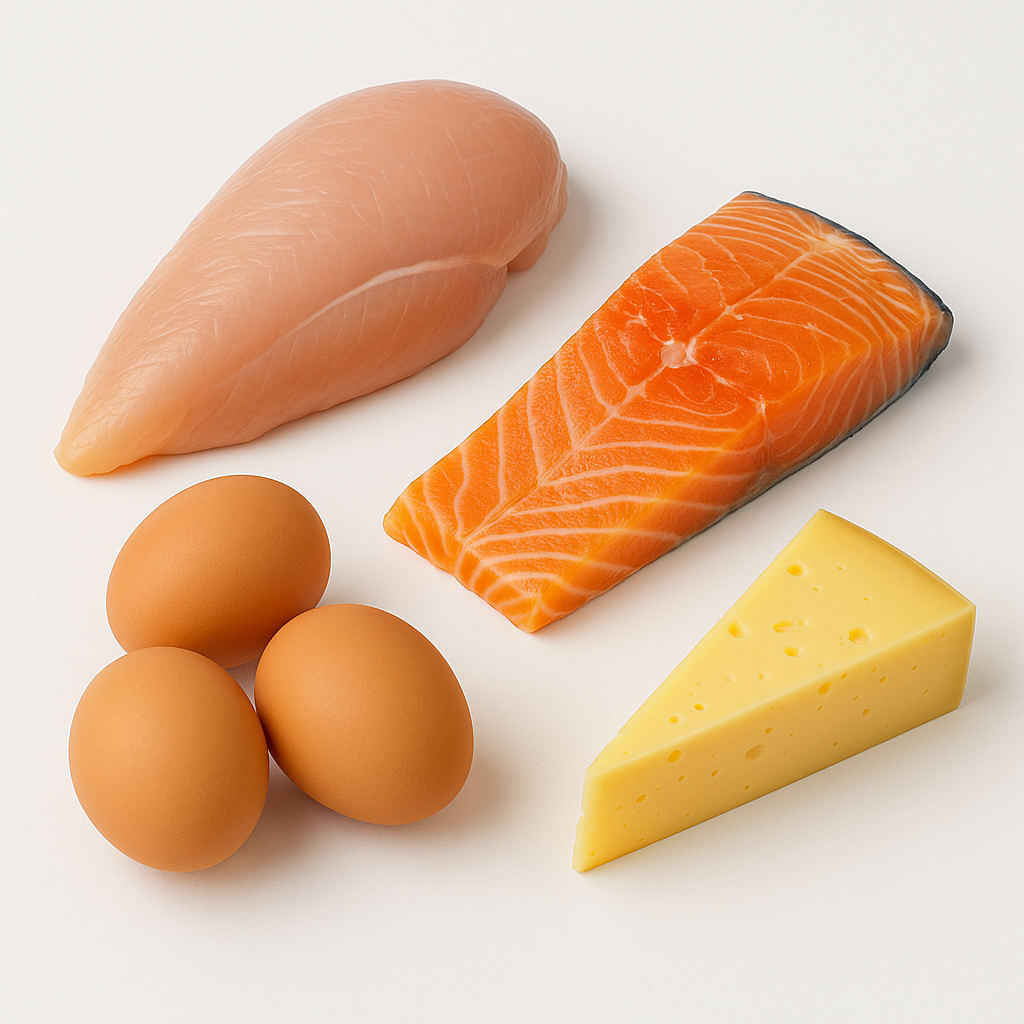
FAQs: Expert Answers
Q: Can I build muscle on a vegan diet?
A: Yes! Combine legumes (lentils), seeds (hemp), and soy (tempeh). Track amino acids with apps like Cronometer.
Q: Are protein powders safe long-term?
A: Choose third-party tested brands (NSF Certified). Avoid those with artificial sweeteners or heavy metals.
Q: How do I avoid bloating when increasing protein?
A: Gradually up your intake, drink water, and include digestive enzymes (pineapple, papaya).
Conclusion: Protein with Purpose
Boosting protein doesn’t require bland meals or expensive supplements. By choosing nutrient-dense, whole foods—from salmon to spinach to chia seeds—you’ll fuel your body holistically. Start with one tip today, and watch your energy, strength, and overall health soar.
Next Steps:
- Audit your current sources.
- Pick 2 new recipes from this guide.
- Track energy levels for 2 weeks.
Need More? Explore our mushroom soup.
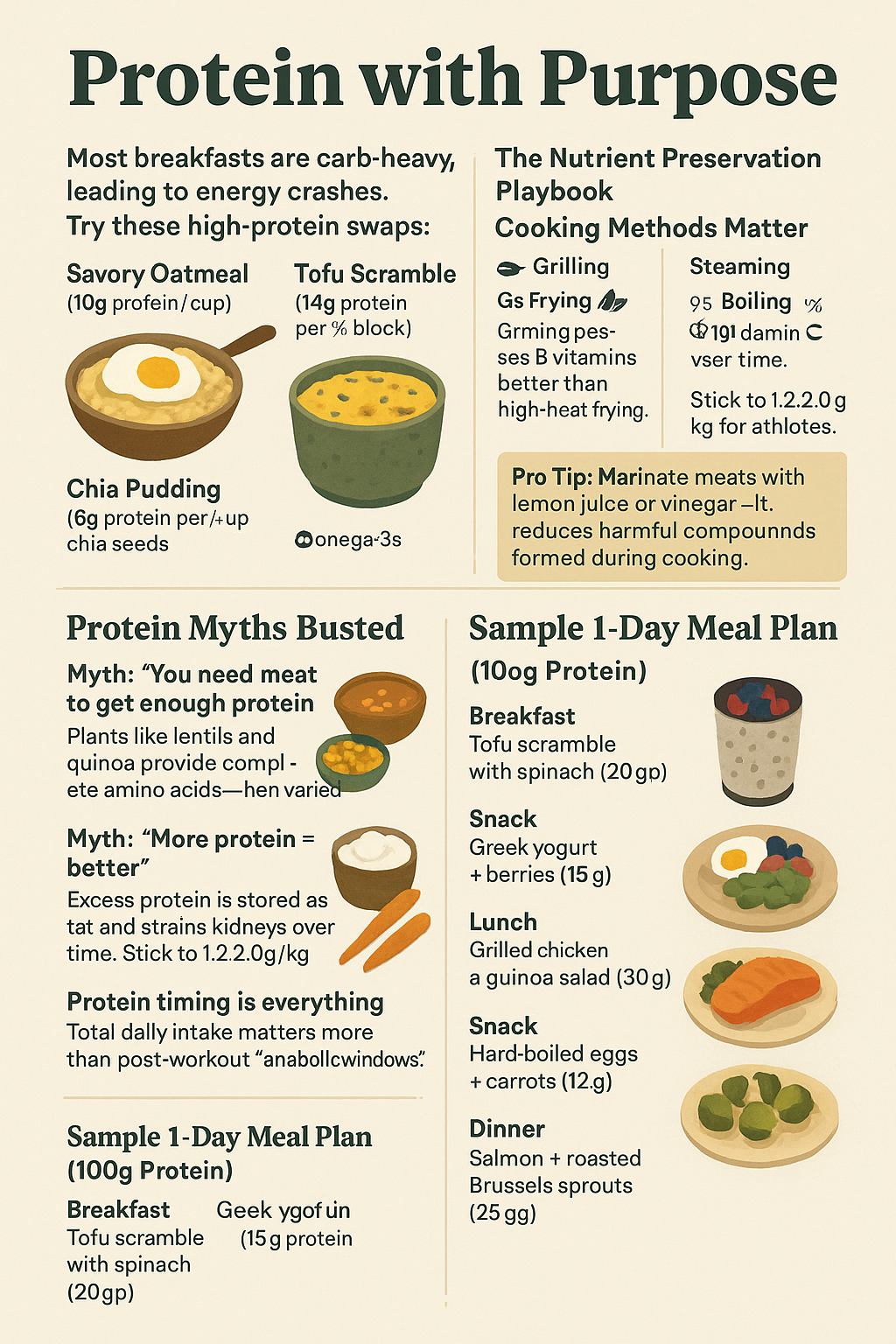
Protein is indeed crucial for our health, but it’s easy to get caught up in marketing gimmicks like sugary protein bars. I appreciate the emphasis on whole foods and nutrient-dense options—it’s a more sustainable and healthier approach. I’m curious, though, how do you balance protein intake with other nutrients like fiber and healthy fats in a busy lifestyle? Also, what are your thoughts on plant-based protein sources compared to animal-based ones? It’s great to see a focus on holistic health rather than just protein in isolation.
Totally agree, sneaky protein bars are just candy in disguise! For busy days, I lean on quick combos like nuts + fruit or eggs + veggies. Plant vs. animal? Mix both for balance.